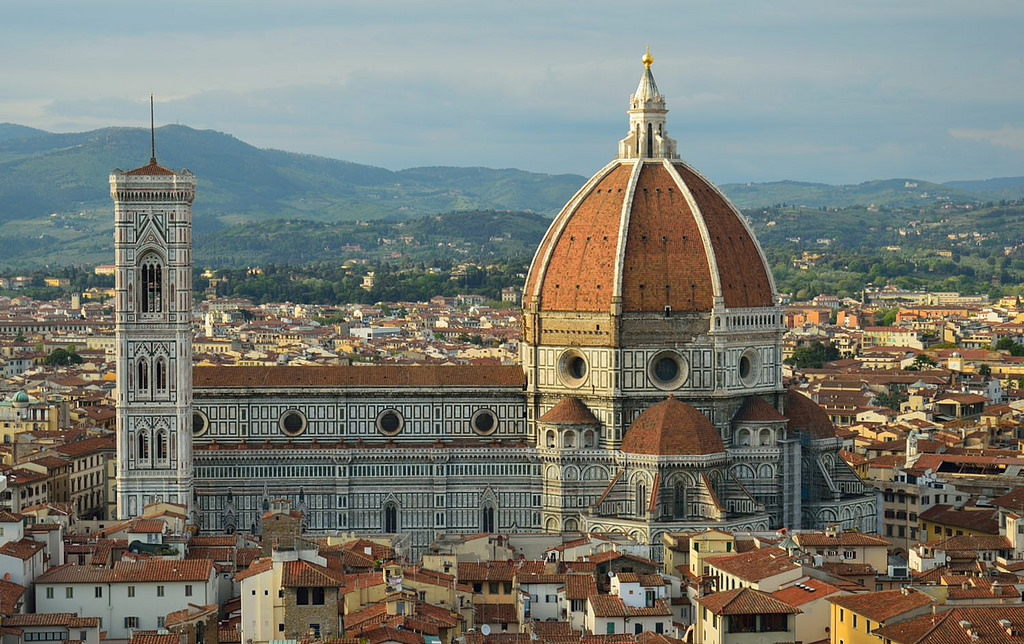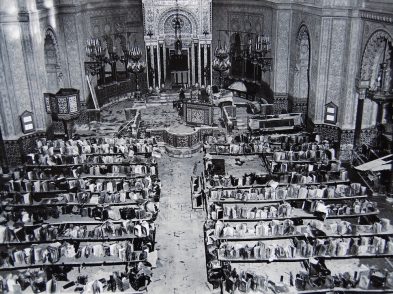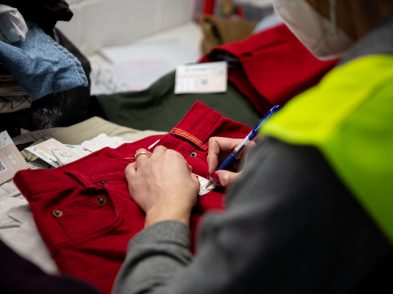*updated May 5, 2014
Housing sculpture and liturgical items no longer in use in the Cathedral of Santa Maria del Fiore and its related buildings, the Museo dell’Opera del Duomo will close the week after Easter 2013 for a major restoration, remaining partially open, and close fully on May 19, 2014. It will reopen in October 2015, in time for a planned papal visit to Florence. We asked Franco Lucchesi, president of the Opera di Santa Maria del Fiore, what to expect from the future museum.

The restored Gates of Paradise were just unveiled in September, but the museum is closing soon! Will there be any access to these and other works during the closure?
Yes, we have planned a partial closure for the first year of the restoration, permitting access to the courtyard, where the Gates of Paradise are located, and to Michelangelo’s Pietà [located on the landing between the ground and first floors]. Furthermore, some 30 works from the museum will be part of a two-year traveling exhibit, starting in July in the United States since 2013 is the year of Italian culture there. Also, there will be a room that will allow visitors to visit the new museum virtually, using 3D projections to help them imagine what it will be like.
What is the motivation behind this major change to the museum?
Our museum is one of 74 museums in the city of Florence alone. We have conducted a study to understand our position in relation to the other museums, and we have learned that the Museo dell’Opera del Duomo appeals to an educated public, with a good level of cultural understanding, perhaps the visitor who stays longer than the usual two or three days in the city. We would, of course, like to have more visitors to the museum, because just going up to see the panorama of the city from the Cupola does not provide a true understanding of what the Cupola or the Duomo complex represents.
How many people currently visit the Duomo, its museum and other structures each year?
Florence has about 7 million visitors each year and we estimate that 4.5 million of them visit the Duomo. But as we don’t have an entry ticket, we can’t count them! Of these, 1.4 million purchase tickets: 840,000 climb up to the Cupola or Campanile; about 100,000 visit the museum, and 246,000 go to the Baptistery. [The remaining tickets regard the crypt, guided tours, and the cumulative ticket].
What will the new museum be like?
It will focus on two elements. First, it will stress the close connection between art and faith. Second, it will make clear that the museum is not a museum like the rest but essentially a contextualization of the works in the past, an attempt to create a link between what one sees outside, in piazza del Duomo, and what is now located inside.
To this regard, there will be important architectural interventions. The museum will double in space, using an adjacent former theatre (which was also a car garage in the past) that we acquired some years back with the museum extension in mind. In this space, there will quite literally be a reconstruction of the piazza, with the façade at the time of Dante in front of you, and behind you, the originals of the three sets of doors from the Baptistery. We already have the central Gates of Paradise, and soon [March 2013] we will be removing the North Doors by Lorenzo Ghiberti, which will go into restoration for two years, after which they will almost certainly go to the museum, while a copy will be put in their place. Some of the works by Arnolfo di Cambio and his workshop will be placed at their original height on the reconstruction of the façade. On the other hand, the statues and reliefs from the Campanile will be installed lower down to permit a closer look in a long hallway that we expect will be a dramatic and emotional experience.

Also, within the existing museum, we will be removing the wall between the room containing the cantorie and the one in which the bell tower reliefs are now located to make a kind of church with an altar. Numerous important works have already been moved, such as the big arch by Baccio Bandinelli, which was affixed to the wall with metal supports and had to be removed from the current display in order to move the very important Madonna degli Occhi di Vetro, which was part of the Duomo’s Gothic façade project; it had to be moved in preparation for the new display in the former theatre space. Transferring Michelangelo’s Pietà will be the most difficult feat of all. We plan to open up the roof of the museum to allow access and then move it with a crane.

Will the museum use technology or social events to attract return and resident visitors?
A smartphone app, developed by the same people as Uffizi Touch, will provide an audio-visual explanation of the Baptistery doors and some other elements in the museum. We are thinking of offering some temporary exhibits and sending some of our works abroad. We are also open to the idea of having events, conferences and aperitivi. A new café will open in the museum, and we will be making it available for exclusive event rentals, cultural or otherwise.







